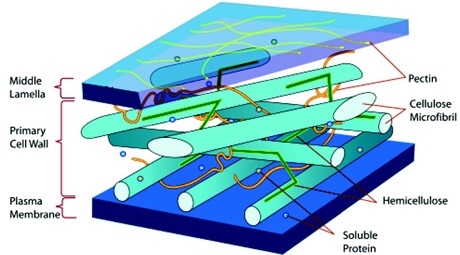Synthesis of polymers found in the skin of tomato fruit provides insight into fundamental natural mechanisms.
Polymers which are produced from biomass rather than fossil raw materials are emerging as a new class of materials. Here, it is interesting to study polymers already present in plants. The project provides new insight into the structure and function of the plant polyester cut in which possesses several properties that are suitable for the polymer industry.
Plants maintain their structure through the formation of a rigid extracellular structure, namely, the plant cell wall. The cell wall is covered by a protective layer,the cuticle. Acting as a skin for the plant, the cuticle is a primary barrier against mechanical stress, pests, microorganisms, UV light, and other types of stress. The cuticle is a lipophilic composite material made of organic soluble compounds referred to as cuticular waxes, embedded in a polymeric scaffold named cutin.
Understanding the bio-information of cutin is important both for fundamental biology and for industrial applications. Despite the fact that the monomeric composition of cutin has been thoroughly studied in the past, not much is known about its threedimensional structure. Tomato fruit has a high cuticle density, making it easier to obtain samples.
Up to date, very little is known about cutin synthases (CUS) enzymes, their selectivity, their tertiary structure and their mechanism of action
The synthesis of a cutin monomer, a deuterated derivative of this monomer, as well as five other 2-MHG derivatives was accomplished. All these compounds have been synthesized to be used in CUS1-mediated polymerization to gain more information on CUS1 selectivity and mechanism of action. Additionally, the use of one of these compounds as a CUS1 ligand in co-crystallization experiments was initiated.
Further, four 2-MHG derivatives in which the sn-2 glyceryl moiety was substituted by other small alcohols were synthesized. The subsequent enzymatic assays showed that CUS1 present activity towards fatty acid esters different than 2-MAGs including the product of the migration of the glyceryl moiety to one of the primary hydroxyls, 1-MHG.
Finally, the interaction between CUS1 and its substrates through the formation of hydrophobic tunnels was investigated by the formation of CUS1 mutants through site-directed mutagenesis. Also, the investigation of several Arabidopsis GDSL mutants as potential suberin synthase was initiated through the production and characterization of knockdown mutants via RNA silencing.

Representation of the primary cell wall.